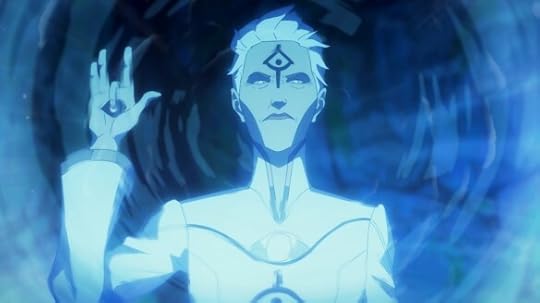Tyler F.M. Edwards's Blog, page 7
November 6, 2023
So, the Worldsoul Saga
I was pretty convinced I was finished with World of Warcraft. I wrote a whole fan fic to say goodbye to the game and everything. I’m not yet ready to say the announcements at BlizzCon have changed my mind, but they’ve brought me closer than I thought possible.
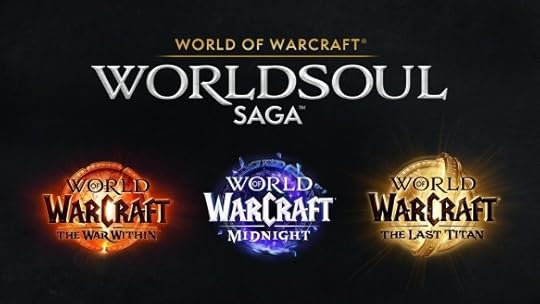 To be sure, it is an uphill battle for WoW to win me back at this point. I’ve missed three expansions, and the effort of catching up is daunting. The talent system has been overhauled yet again, into a form I strongly dislike at that, and the thought of relearning my characters for the umpteenth time is exhausting.
To be sure, it is an uphill battle for WoW to win me back at this point. I’ve missed three expansions, and the effort of catching up is daunting. The talent system has been overhauled yet again, into a form I strongly dislike at that, and the thought of relearning my characters for the umpteenth time is exhausting.
Nor do I relish returning to the yoke of subscription fees and the constant feeling of needing to rush my way through the game to save money, and one must also consider how very old the game is. Even with all the updates, its core gameplay — which I was always merely lukewarm to — feels downright ancient. Can I go back to tab target after becoming so accustomed to New World’s sublime combat?
Honestly, with the trajectory my life, I’m not sure I’m even going to have the time to reinvest in WoW come next year.
Buuuut…
But the Worldsoul Saga does look really cool.
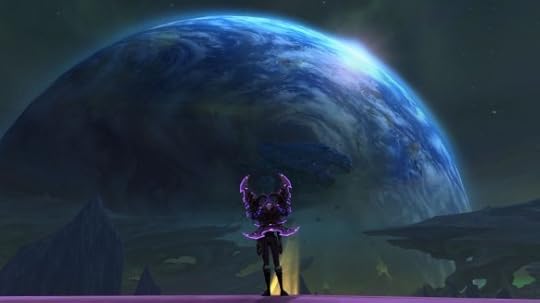 Firstly, we have to admire the sheer ballsiness of announcing three expansions at once. For better or worse, Blizzard has not historically planned this far ahead, nor are they known for their transparency. After three expansions that all felt like the most tired, safe plays to nostalgia possible, this is the kind of ambition they needed to get my attention back.
Firstly, we have to admire the sheer ballsiness of announcing three expansions at once. For better or worse, Blizzard has not historically planned this far ahead, nor are they known for their transparency. After three expansions that all felt like the most tired, safe plays to nostalgia possible, this is the kind of ambition they needed to get my attention back.
There does seem to be a bit of a tacit admission that the last few expansions were a misstep, as well. Aside from Anduin’s PTSD, whose source I am only vaguely familiar with, everything we’ve seen so far feels like it could have come immediately after the end of Legion, for my money the last great WoW expansion.
I’m always mixed about these kind of things. Everything has some fans, and whitewashing canon will always be messy. I’m still upset by how Diablo IV ignores the events of III. But selfishly, I don’t mind the idea of the Worldsoul Saga sweeping the last few expansions under the rug to serve as Legion’s direct sequel.
The concept of Azeroth’s worldsoul is one of the coolest things to come out of modern Warcraft lore, both conceptually and as a way to give meaning and purpose behind all the calamity that’s befallen Azeroth. Doubling down on that is one of the few things meaningful enough that it could actually draw me back.
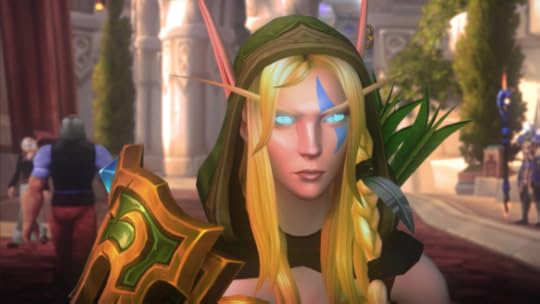 And we need to talk about the second expansion in the trilogy, Midnight. I’m trying not to be an easy mark for big franchises these days, but an entire expansion set in Quel’thalas, focused on uniting the Elven peoples to defend the Sunwell? JUST INJECT THAT SHIT STRAIGHT INTO MY VEINS, METZEN.
And we need to talk about the second expansion in the trilogy, Midnight. I’m trying not to be an easy mark for big franchises these days, but an entire expansion set in Quel’thalas, focused on uniting the Elven peoples to defend the Sunwell? JUST INJECT THAT SHIT STRAIGHT INTO MY VEINS, METZEN.
I try not to overly lionize or villainize specific game developers. Game development is a collaborative process, and it’s rarely down to one individual to make or break anything. But the difference between Warcraft with and without Metzen really does feel like night and day. There’s vision again. The passion is back.
This could all still go wrong. The best story concepts can be ruined by poor execution, and I’m concerned by how much this feels like an ending to the franchise, considering business forces will undoubtedly lead to more expansions after the Saga concludes, something that has already been all but confirmed. How can you provide a satisfying conclusion to the Warcraft franchise when you plan to trot out a new villain of the week in the next patch?
But still, it’s tantalizing, and there seems to be a lot of positive movement on the gameplay front, as well. By far the biggest gameplay factor that kept me away from the game was the restrictions on flight, but now flight mechanics and being able to fly from the start are a selling feature for The War Within, the first part of the trilogy. This started in Dragonflight with dragon-riding, but I really didn’t expect it to be a permanent addition. Now they’re giving (nearly) all mounts dragon-riding mechanics and fully embracing flight as part of the game’s identity, as it always should have been.
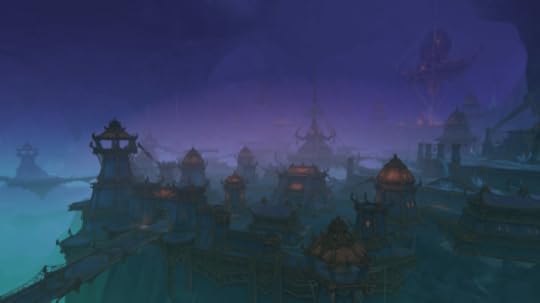 I haven’t played Dragonflight, mind you, so I don’t know firsthand what dragon-riding is like, but it looks cool, and the reception seems to have been very positive. I’m just glad any form of flight is being embraced.
I haven’t played Dragonflight, mind you, so I don’t know firsthand what dragon-riding is like, but it looks cool, and the reception seems to have been very positive. I’m just glad any form of flight is being embraced.
Delves and warbands are more nice-to-haves than need-to-haves, but they both sound like welcome features all the same. Delves seem like they’re basically just the scenarios from Pandaria with a rebranding and a few tweaks, and warbands are basically WoW’s take on SWTOR’s legacy system. Both solid ideas.
I’m a little more mixed on hero talents. Despite the talent tree layout, they sound more like Mists talents with choosing one option per tier, which is good, and a lot of them at least sound very cool based on the names. Dark Rangers! Frostfire mages!
But I can see a lot of ways for this to go wrong. How do you scale it in future expansions without continuing the endless talent tree redesigns that have dogged WoW forever? How do you balance between those who want them to really shake up their class and those that want to keep playing their characters as they always have? As someone who rarely plays hunters, I know I’d love it if Dark Ranger completely changed the class into something wildly different, but I wouldn’t be so happy to see my rogue suddenly unrecognizable because of her hero talents.
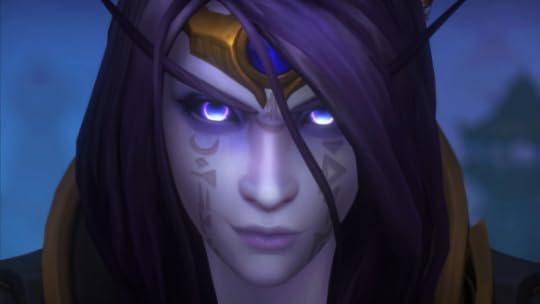 If they’re smart, they’ll provide a mix of subtler and more radical hero talent trees, giving people the choice to maintain their current playstyle or go crazy, and they’ll add new hero talent trees with future expansions (say one per class) so as to make them a form of horizontal rather than vertical progression, but I’m not terribly confident in either of those things actually happening.
If they’re smart, they’ll provide a mix of subtler and more radical hero talent trees, giving people the choice to maintain their current playstyle or go crazy, and they’ll add new hero talent trees with future expansions (say one per class) so as to make them a form of horizontal rather than vertical progression, but I’m not terribly confident in either of those things actually happening.
I still don’t know if I’m ever really going to get back to WoW, but regardless, I do take some comfort in seeing it move in what seems to be a much better direction. It feels like Warcraft again.
October 20, 2023
Song of the Month: Chvrches, Cry Little Sister
It’s not technically Chvrches two months in a row!
I only discovered this song recently despite it apparently being released two years ago. It’s a cover of a song I had not previously heard of, done for a Netflix movie I had also never heard of. I always feel obligated to post something spooky for October, and this fit the bill.
October 2, 2023
The Baffling Mismanagement of Age of Empires IV
Few game releases in recent years have brought me as much joy as Age of Empires IV. Age of Empires was one of the defining franchises of my childhood, and seeing it resurrected as a modern triple-A title felt almost miraculous. Even more miraculous is that it managed to live up to the sky-high expectations I had.
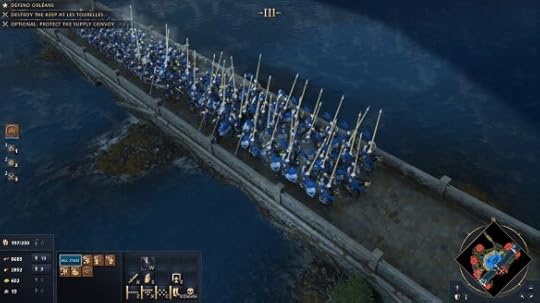 Which is what makes it so heartbreaking that the game has slowly but steadily been going off the rails ever since launch.
Which is what makes it so heartbreaking that the game has slowly but steadily been going off the rails ever since launch.
I was extremely happy with the game at first. It felt like the perfect mix of all the past entries in the franchise combined with modern sensibilities. Whereas AoE1 and 2 civilizations feel a bit too similar by modern standards, and AoE3 civs tended to be overwhelming in their complexity, AoE4 civilizations hit exactly the right balance of unique units and mechanics to make them meaningfully distinct without feeling like you need to relearn the whole game any time you switch.
The pacing felt just right, too. It’s still a slower paced RTS, as you’d expect from Age of Empires, but things like time to kill are sped up just enough to feel more palatable to a modern gamer.
AoE4 also boasted a level of immersion and historical faithfulness greater than any previous entry in the franchise. Of course there will always be some compromises for the sake of gameplay, but things like the documentary-style campaigns and the evolving languages of units gave the impression that the developers truly cared about authenticity.
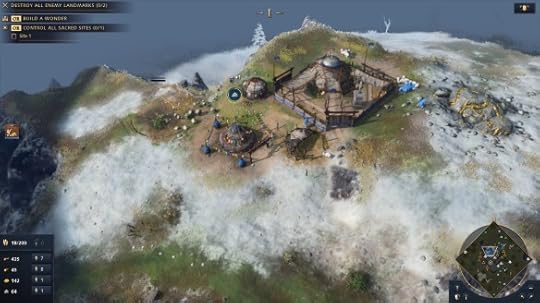 I long-held that Age of Empires II was the best game in the franchise, probably never to be equaled, but after I settled into AoE4, I realized it had become my favourite.
I long-held that Age of Empires II was the best game in the franchise, probably never to be equaled, but after I settled into AoE4, I realized it had become my favourite.
I had only one major complaint at launch: AoE4 lacked content, especially for people who don’t want to play competitively. There were only eight civilizations, and only four had campaigns, all of which were relatively short.
I assumed DLC with more campaigns would be fast in coming, especially given the quick rate AoE2 has been churning them out.
In the meantime, I tried to tide myself over with skirmishes versus AI, but the skirmish AI in AoE4 is among the worst I’ve ever seen in an RTS, and they’re usually bad, so that’s saying something. Most of the time it’s hyper-aggressive for the first fifteen minutes or so, then just gives up on life and stops attacking, aging up, or doing much of anything. Other times it never attacks the entire game.
But I figured it just needs polish, right? Patches will fix it.
So I settled in to wait for DLC and AI improvements. And waited. And waited. And waited.
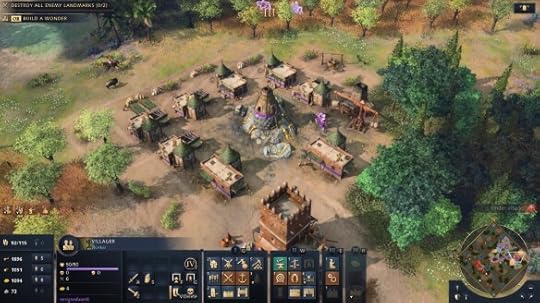 The first major update came about a year after launch with the Ottoman and Malian civilizations, but this proved a disappointment. There was no single-player content included, and the Malians felt more like AoE3 civilization — too different to easily parse for a more casual player.
The first major update came about a year after launch with the Ottoman and Malian civilizations, but this proved a disappointment. There was no single-player content included, and the Malians felt more like AoE3 civilization — too different to easily parse for a more casual player.
At this point I began to despair that anything would ever be done for versus AI fans. Meanwhile the devs’ resources were spent on bizarre events like an enchanted grove biome and an in-game hunt for cryptids. If this were Age of Mythology, those might be fun ideas, but this was supposed to be the most immersive and historical AoE game yet.
These events probably didn’t take up much developer resources, but the fact that any resources were put into them at all while versus AI fans continued to be neglected rubs salt in the wound.
Meanwhile gameplay design also continued to shift away from the casual player. Multiple civilizations were given additional unique units, adding significant complexity to the game. I barely tolerate this kind of chaotic design in MMORPGs, where it’s par for the course, and I definitely don’t want to see it in an RTS.
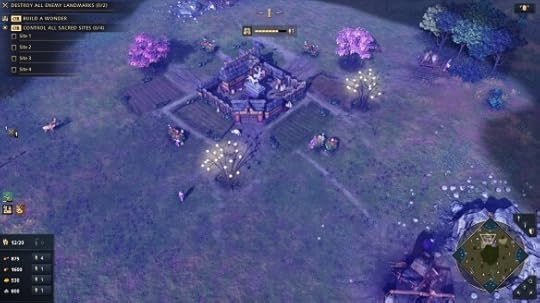 Despite the poor AI, I was still playing skirmishes occasionally, but this pretty much put an end to that. I don’t like having to relearn the game every time I come back from a break.
Despite the poor AI, I was still playing skirmishes occasionally, but this pretty much put an end to that. I don’t like having to relearn the game every time I come back from a break.
That brings us to the current day and the upcoming Sultans Ascend expansion. Its announcement provided a glimmer of hope, and there are still parts of it that seem promising, but increasingly it seems to be another series of unforced errors.
Given the history of the game to date, I had modest expectations for the campaign content, but even those were not met. I expected at least two campaigns — one for the Abbasid Dynasty, one for the Delhi Sultanate. I mean, it’s in the name, right? As a stampy-boi enjoyer, the idea of a Delhi campaign excited me.
But we’re only getting one campaign, focused on the Crusades. Presumably this will be played exclusively as the Abbasid Dynasty and/or their new variant, the Ayyubids (more on that in a moment).
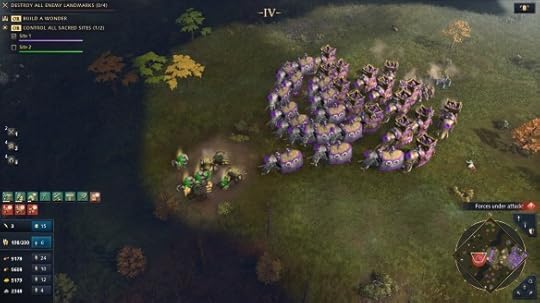 I have nothing against the campaign itself. It looks fun, and I like playing the Abbasids, even if they’re not one of my absolute favourites. But it’s an underwhelmingly small amount of content after two years of waiting, even if it is slightly longer than the average AoE campaign (eight missions). By comparison, AoE2’s recent DLCs have generally offered three campaigns of 5-6 missions each, for a total of around fifteen.
I have nothing against the campaign itself. It looks fun, and I like playing the Abbasids, even if they’re not one of my absolute favourites. But it’s an underwhelmingly small amount of content after two years of waiting, even if it is slightly longer than the average AoE campaign (eight missions). By comparison, AoE2’s recent DLCs have generally offered three campaigns of 5-6 missions each, for a total of around fifteen.
I enjoy AoE4’s campaigns more than most, but they’re not really any better than AoE2’s in terms of depth or quality. There’s no obvious justification for the lesser amount of content.
The new civilizations, Byzantines and Japanese, were never really on my wishlist, so they don’t do a lot for me (I grant this is purely subjective, however), especially when they don’t come up with campaigns and skirmishes are still in such a sorry state.
That brings us to the variant civilizations, a banner feature for the Sultans Ascend and possibly the most bizarre choice ever made by an Age of Empires game.
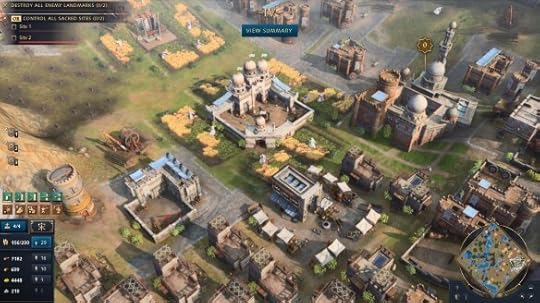 Each provides a new twist on an existing civilization’s gameplay. The concept isn’t terrible, though I think we’d all prefer actual new civilizations, but the execution looks disastrous. Age of Empires has always been about playing as civilizations, as whole nations and cultures, but these variants are based subcultures, specific organizations, or even single individuals like Jeanne d’Arc.
Each provides a new twist on an existing civilization’s gameplay. The concept isn’t terrible, though I think we’d all prefer actual new civilizations, but the execution looks disastrous. Age of Empires has always been about playing as civilizations, as whole nations and cultures, but these variants are based subcultures, specific organizations, or even single individuals like Jeanne d’Arc.
Worse still, historical realism appears to have been thrown out the window. China’s variant was initially dubbed “Empire of Jade,” which is not a thing that ever existed.
Following some community pushback, it was renamed Zhu Xi’s Legacy, which references a Chinese philosopher to give a bit more historical justification. The “Sultan’s Army” variant was similarly renamed to Ayyubids. This seemed a step in the right direction, but a deep-dive on the Jeanne d’Arc faction showed that historical accuracy is still not at all a concern.
Focusing on a single individual where matches are meant to represent hundreds of years is already a bit dodgy, but their interpretation of Jeanne is pure fantasy. She has a “Divine Restoration” ability that can heal allies, and she eventually upgrades into wielding a massive hand cannon.
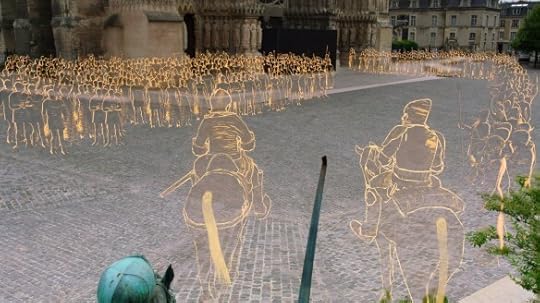 Look, it’s a video game. I get it. I’m not opposed to her being a combat unit like she was in the campaign (though for what it’s worth in reality she claimed never to have killed a man personally). But she can be a hero unit and have powerful abilities while still respecting historical accuracy. The idea of her slinging out healing spells while cutting a swath through the enemy with a medieval bazooka strains credibility beyond the breaking point.
Look, it’s a video game. I get it. I’m not opposed to her being a combat unit like she was in the campaign (though for what it’s worth in reality she claimed never to have killed a man personally). But she can be a hero unit and have powerful abilities while still respecting historical accuracy. The idea of her slinging out healing spells while cutting a swath through the enemy with a medieval bazooka strains credibility beyond the breaking point.
(Because of course some sexist trolls have come out of the woodwork to complain about a woman existing, I need to point out that isn’t my objection. The contributions of women throughout history are often overlooked, and seeking to right that is a noble goal. This is just a bad way to do it.)
Yes, it’s a small thing, but small things add up. And they present an insight into the the mindset of the developers. They could have called her heal something like “Rally Cry” as opposed to the more obviously fantastical Divine Restoration. They chose not to, and that speaks volumes.
It’s especially frustrating because some of the gameplay concepts behind the variant civilizations do sound fun, and they’re being wasted on these weirdly niche variants. I like the idea of a faction that focuses on fewer, better units as the Order of the Dragon (Holy Roman Empire variant) is reported to, but it’s such a waste not to use that as the basis for a whole new civilization. Perhaps the Vietnamese or some other culture known for triumphing over seemingly more powerful opponents.
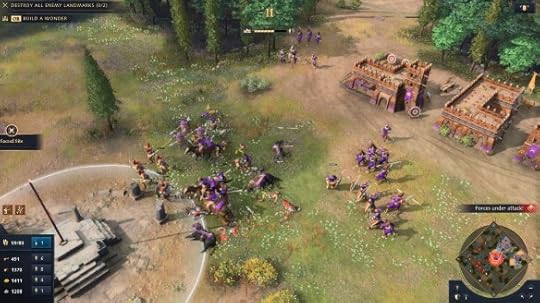 People offer the defence that you don’t have to play the variant civs if you don’t like them, but you still have to encounter them if you play multiplayer, they still factor into the price of the DLC, and most importantly, it again speaks to poor use of development resources. Less than half the game’s civilizations have campaigns, but they can spare the resources for enchanted groves and Magic Rambo Joan of Arc?
People offer the defence that you don’t have to play the variant civs if you don’t like them, but you still have to encounter them if you play multiplayer, they still factor into the price of the DLC, and most importantly, it again speaks to poor use of development resources. Less than half the game’s civilizations have campaigns, but they can spare the resources for enchanted groves and Magic Rambo Joan of Arc?
I’ll also add that while we don’t know much about the Japanese gameplay right now, what we’ve heard sends up some potential red flags as well. An apparent focus on ninjas, complete with smoke bombs, feels much more like a pop culture view of medieval Japan than anything rooted in reality.
Adding insult to injury, Sultans Ascend is quite expensive. In my country it’s selling for $19.99, whereas most AoE2 DLCs are $10.99. As a campaign player, I’m paying nearly twice the price for about half as much content. It contributes to a growing feeling that solo and casual players are viewed as second-class citizens by the developers, expected to subsidize the game while getting a fraction of the development resources.
This all feels weirdly reminiscent of World of Warcraft’s “raid or die” issues and the slow, steady decline they brought about. I don’t know how much this is really affecting AoE4’s fortunes, but I can say there’s at least one player who feels like he’s being pushed away from the game.
There’s still a decent chance I’ll buy Sultans Ascend, perhaps on sale. The new campaign is still appealing. But in light of how much I loved the game at launch, the fact that it’s even in question is a damning statement about the management of the game.
September 22, 2023
Songs of the Month: Lauren Mayberry, Are You Awake, and Ggwendolyn, Orion
When Lauren Mayberry of Chvrches announced she was launching a solo career, I imagined it would be promoted heavily through Chvrches’ social media. I assumed wrong. I had to scramble to catch up earlier this month when I realized her solo work had already begun.
For starters, she released the first single, Are You Awake. It’s pretty much what I’d expect from Lauren Mayberry solo: very sad and very beautiful.
However, I also learned that she was performing a live show here in Toronto at the Horseshoe Tavern. It was already sold out, but thankfully I managed to grab a ticket on the secondary market.
The show was earlier this week, and it was pretty amazing. Interestingly, most of Lauren’s other new songs are quite different from Are You Awake — a lot louder and more energetic. Overall I’d say the new stuff sounds fairly similar to Chvrches, but heavier and with more of an edge. I’m here for it.
I was also pleasantly surprised by how much I enjoyed the opening act, an artist named Ggwendolyn whom I was not previously familiar with. I’ve decided to take the unusual step of having two songs of the month for September so I can show her a bit of love, too.
While her music is different, as a person Ggwendolyn reminded me of Lauren a lot. They’re both fond of amusingly self-deprecating banter between songs. At one point, Ggwendolyn talked about one of her songs being relatable for people who deal with depression, and the whole crowd started cheering. “WOO DEPRESSION.”
That’s how you know it’s a crowd of Chvrches fans.
September 11, 2023
Final Thoughts on Disenchantment
Disenchantment has always been a bit of a divisive show. While I generally count myself as a fan, I do sympathize with a lot of its critics. It is a very strange, inconsistent series.
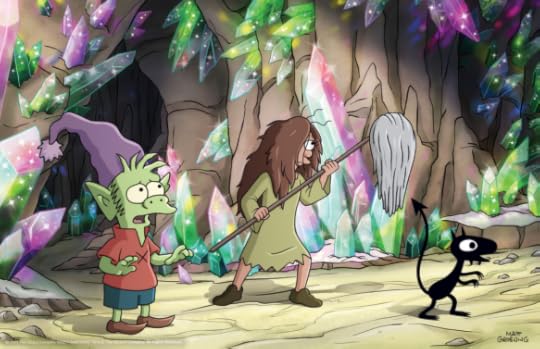 It’s definitely not what you’d expect in the context of Matt Groening’s other shows. I’m not even sure I’d call it a comedy. It’s more of a dramedy. It’s got a lot of jokes, but the humour is ultimately secondary to its intricate plot.
It’s definitely not what you’d expect in the context of Matt Groening’s other shows. I’m not even sure I’d call it a comedy. It’s more of a dramedy. It’s got a lot of jokes, but the humour is ultimately secondary to its intricate plot.
And that plot has not always been a strength. Its pacing has been glacial, and it rambled hither and yon throughout its five seasons with only the barest suggestion of a cohesive direction. A lot was riding on the fifth and final season to finally pay off all of the mysteries, and while it was an enjoyable season in many ways, it largely failed in that goal.
For much of the last ten episodes, I was ready to declare the fifth season the best, and by far. It manages to be both the funniest and the most serious season to date, finally nailing Disenchantment’s often inconsistent mix of drama and comedy. Up until the final episode, it’s a fantastically enjoyable season.
But I kept waiting for them to finally begin resolving the overwhelming pile of questions and mysteries the show has wracked up over its run. And waiting. And waiting. And waiting. And then the credits rolled.
 Many of the mysteries received resolutions that were glib and unsatisfying. Even more got no answers at all. They even introduced a few new big mysteries this season and then promptly refused to resolve them, too.
Many of the mysteries received resolutions that were glib and unsatisfying. Even more got no answers at all. They even introduced a few new big mysteries this season and then promptly refused to resolve them, too.
Perhaps part of the blame is on me for over-hyping myself, but they really did sell the idea there was some grand plan and that everything would be revealed in the end. I’m having flashbacks to the ending of the Ron Moore Battlestar Galactica — although however flawed it may have been, Disenchantment’s ending is still much more satisfying than BSG’s disastrous conclusion.
We had long heard that Disenchantment was planned to run for six seasons. No explanation has been given for why it ended with season five that I’m aware of, but it’s likely Netflix pulled the plug on them prematurely. I’ve seen a lot of people blame the ending’s messiness on this, and I’m sure it didn’t help, but so little is answered that I’m leaning towards the impression the writers just didn’t have a plan and didn’t know how to wrap things up.
However, Disenchantment’s saving grace has always been its characters, and that remains true here. Again echoing BSG, even as the meta-plot collapsed, the character arcs remained strong.
 Bean and her companions have always been fiercely lovable, and that never stopped being true. In preparing for this post, I went back and reread my previous posts on Disenchantment, and even way back in season one I was heaping praise on Abbi Jacobson as Bean, and if anything my opinion of her performance has only increased since then. As the child of a narcissistic parent myself, her fury at Dagmar felt very cathartic.
Bean and her companions have always been fiercely lovable, and that never stopped being true. In preparing for this post, I went back and reread my previous posts on Disenchantment, and even way back in season one I was heaping praise on Abbi Jacobson as Bean, and if anything my opinion of her performance has only increased since then. As the child of a narcissistic parent myself, her fury at Dagmar felt very cathartic.
Also, this was truly Mop Girl’s finest hour. Not the hero we deserve, but the hero we need.
The conclusion of Disenchantment’s many character arcs is as satisfying as the conclusion of its meta-plot is disappointing. There’s a lot of happy endings, and some bittersweet endings, but it feels like everyone wound up exactly where they belong one way or another. For a show that was always about finding your place in the world when you don’t quite fit in, it’s a great place to leave it.
In the end, Disenchantment died as it lived: Frustratingly uneven, but with enough heart to make the journey worthwhile.
August 25, 2023
August 11, 2023
Gaming Round-Up: Summer Sale Aftermath
Thanks to the recent Steam sale, I’ve blitzed through quite a few games recently. I’ll just go through them all real quick… or as quick as someone as long-winded as me is gonna get, anyway.
This one was not actually a sale purchase but a birthday gift from a friend. As a Dontnod fanboy, it’s been on my wishlist pretty much from the moment I heard about it.
In practice, it was an odd, inconsistent game. Fall of Reverie’s events take place across two realms: A near future version of our world, and Reverie, the world of dreams, where dwell humanity’s personified Aspirations.
The story in the human world never really came together for me. All of the characters are too faultlessly nice to be believable… except one, but there was never an opportunity to truly take them to task for how awful they were. It felt just a bit too saccharine.
On the other hand, I did really enjoy all the stuff with the Aspirations. The game pushes you to choose one Aspiration to champion, and I think they did a really good job of making them all seem like valid choices with pros and cons, with none of them being obviously good or bad choices. A lot of narrative games try for stuff like this, but rarely is it executed so well — there usually seems to be at least one or two no-brainer choices.
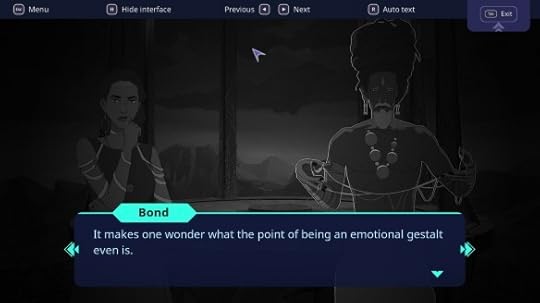 I chose Truth to champion, with Bond and Power roughly tied for second place. I wasn’t expecting to like Power at all, but his direct, uncompromising approach to morality proved very appealing. I’m not sure if I’ll replay the game, but if I do, I will almost certainly side with Power.
I chose Truth to champion, with Bond and Power roughly tied for second place. I wasn’t expecting to like Power at all, but his direct, uncompromising approach to morality proved very appealing. I’m not sure if I’ll replay the game, but if I do, I will almost certainly side with Power.
The game’s other gimmick — the limited ability to see the consequences of your actions before you take them — was interesting to do once, but I don’t see it as the future of narrative games or anything. I also found that the way the consequences of my choices came together made for a very disjointed final chapter, but I think that was just bad luck.
So it was definitely a flawed game, but I think it was a unique and interesting enough experience to be worthwhile.
Oxenfree II: Lost Signals
I had no idea Oxenfree was even getting a sequel, but then I just stumbled across it on Steam’s front page one day. I loved the original, so it was an instant buy.
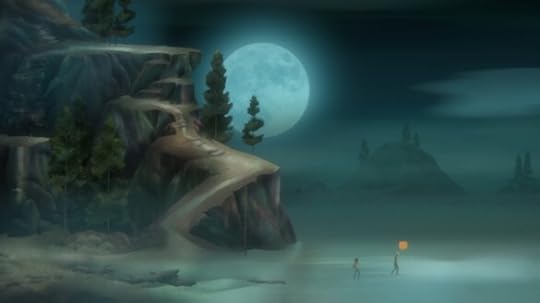 That said, I can’t say I ever felt Oxenfree was a game that needed a sequel, and at times Lost Signals did feel a bit unnecessary. The first half of the game felt like it was just rehashing the first without bringing anything new to the table.
That said, I can’t say I ever felt Oxenfree was a game that needed a sequel, and at times Lost Signals did feel a bit unnecessary. The first half of the game felt like it was just rehashing the first without bringing anything new to the table.
Things got a lot better in the latter half of the game, though, and it did do a much better job of providing a conclusive ending to the story than the half-hearted new game plus mode for the original did.
So I don’t think Oxenfree II was nearly as good as the original, but it still felt worth it in the end. Mostly the problem is the first one was such a classic that you can’t really make lightning strike twice.
Star Trek Prodigy: Supernova
Among the news of Star Trek: Prodigy’s shocking and unjust cancellation, I was reminded there is a video game spin-off, Supernova.
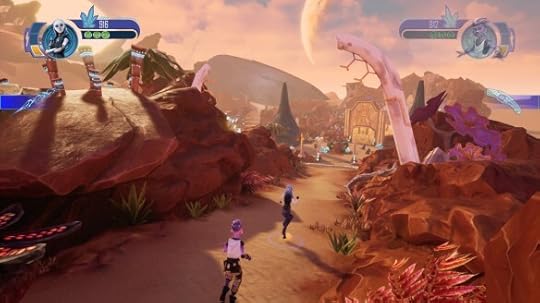 I really want to like this game. It’s got the full original voice cast of Prodigy, so as far as the story goes it’s basically just an extra couple episodes of Prodigy, which I’m all for.
I really want to like this game. It’s got the full original voice cast of Prodigy, so as far as the story goes it’s basically just an extra couple episodes of Prodigy, which I’m all for.
But I have to be honest that I’m really struggling to get through the gameplay. It’s not horrible or anything, but it’s clearly designed for young children, so it’s very basic and very shallow.
I’m thinking I might just watch the rest of the game on YouTube.
Blacktail
Of the games I’ve played recently, this was probably my favourite. Blacktail is an open world game loosely inspired by the myth of the witch Baba Yaga. It’s got a dark fairytale vibe that is both twisted and whimsical.
It’s still got a few rough edges — it could have really used a more traditional fast travel system, and the ending is mildly confusing — but overall it was a good time. The story is pretty engaging, it’s paced well for an open world game, the voice acting is stellar, and the music is lovely.
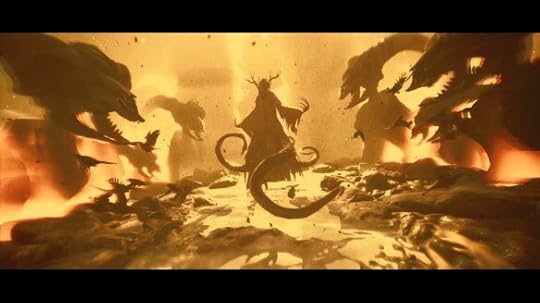 It’s also one of the few games I’ve seen that does side quests well. There aren’t that many of them, and most are lengthy, compelling stories in their own right. They’re not just checklists of chores used to pad out the runtime of the game.
It’s also one of the few games I’ve seen that does side quests well. There aren’t that many of them, and most are lengthy, compelling stories in their own right. They’re not just checklists of chores used to pad out the runtime of the game.
This is one I wouldn’t mind seeing a sequel to.
July 28, 2023
Song of the Month: Billy Talent, Red Flag
After being a fan since my teen years, I finally got to see Billy Talent live in concert earlier this month. So what better way to celebrate than by sharing the first Billy Talent song I ever heard, and still one of my favourites.
They closed the show with this. I spent the whole show hoping for it, and when it finally started up, it felt so epic.
I gotta say it was one of the best concerts I’ve ever been to. Decades into their career, they’ve lost none of their edge.
July 17, 2023
New on DMs Guild: The Song of Lament
I’ve just released a new adventure on Dungeon Masters Guild, The Song of Lament. Set in the mythic world of Theros, The Song of Lament sees the party ally with the mysterious woman Acantha as she seeks a boon of the god Athreos. Thus begins a tale of tragedy, hope, and renewal, culminating in the chance to rewrite the past itself.
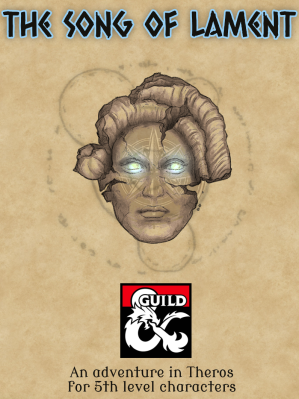 The Song of Lament is a short adventure for two to six fifth level characters. It should take two to three sessions to complete, and it features detailed mechanics to scale the difficulty of the adventure to the size of your party.
The Song of Lament is a short adventure for two to six fifth level characters. It should take two to three sessions to complete, and it features detailed mechanics to scale the difficulty of the adventure to the size of your party.
In other DMs Guild news, my Pact of the Coven option for warlocks has recently earned its copper best-seller badge, and most of the supplements I’ve worked on are currently discounted for the Christmas in July sale.
July 7, 2023
Giving Up on Modern Star Trek
I had an epiphany of sorts a few months back while watching the abysmal Disney+ Obi-Wan series. The reason so much of the modern incarnations of big franchises like this are so bad is because they don’t need to be good. We all just keep tuning in based on the brand name and nothing else.
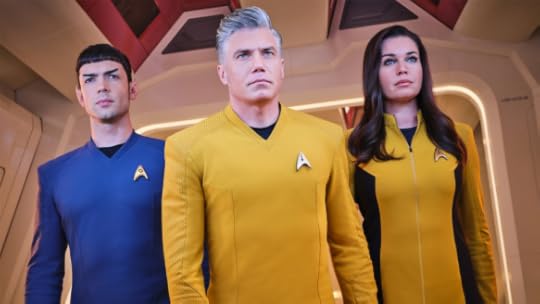 Since then I’ve decided I want to be less of an easy mark for such things, and I think the end result has been that I am throwing in the towel on modern Star Trek.
Since then I’ve decided I want to be less of an easy mark for such things, and I think the end result has been that I am throwing in the towel on modern Star Trek.
I skipped season three of Picard. Its second season was the single worst piece of media I’ve ever consumed, the only thing I would rate a 0/10, and based on the spoilers I’ve read, the third season was no better.
I had been assuming I’d show up for the second season of Strange New Worlds, but when it finally started, I found the idea of sitting down to watch it felt more like a chore, and I realized maybe I’m ready to stop showing up to anything just because it has the Star Trek brand name.
Let’s be real: There hasn’t been a single good season of modern, live action Star Trek. There have been some okay seasons, but nothing truly good.
Season three of Discovery started very strong, but it kind of fell apart at the end, the rebuilding of the Federation done offscreen and seemingly overnight like Voyager’s endless miraculous resets. Season one of Picard had some excellent moments, but also some incredible blunders, and it mostly felt like set-up for future stories that the later seasons never delivered.
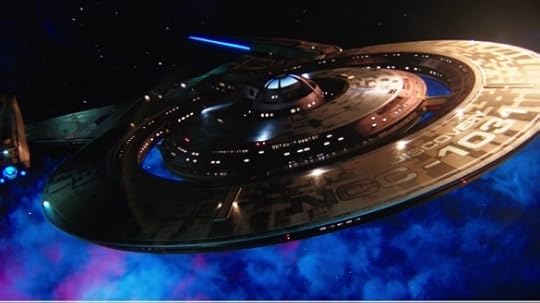 There’s been other bright notes here and there, and to be clear, all of these shows have consistently had excellent acting and production values, but none of that really wallpapers over how bad the scripts have been throughout.
There’s been other bright notes here and there, and to be clear, all of these shows have consistently had excellent acting and production values, but none of that really wallpapers over how bad the scripts have been throughout.
Strange New Worlds was pitched as a return to form, and it seems to have won over a lot of classic fans, but at best it’s only achieved basic competence. It’s telling that I’ve already forgotten nearly everything that happened in the first season. I remember Jess Bush being amazing as Nurse Chapel, but I couldn’t describe any of her scenes to you.
Mostly all I remember from SNW season one are the parts that pissed me off.
There are bunch of moments here and there in SNW that made me think that the writers just don’t get Star Trek, but one in particular stands out as emblematic, and since this is already shaping up to be a long post, I’ll focus on it.
For most of the episode, “Lift Us Where Suffering Cannot Reach” is an excellent throwback to classic Trek. The Enterprise encounters a planet where technology has seemingly created a paradise, only to learn that (for unexplained space magic reasons) the technology must be fueled by the sacrifice of innocent children.
A leader of the planet defends her people’s practices to Pike, asking if he can say that no one suffers to keep the Federation’s utopia running.
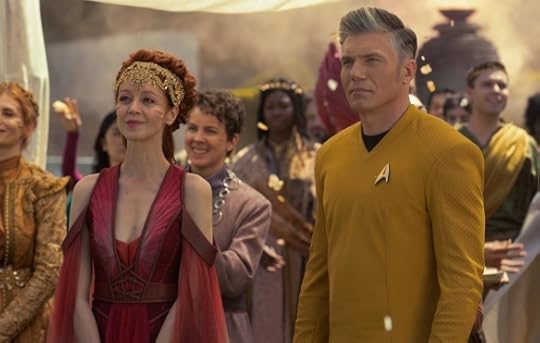 “This is it,” I thought. “This is the classic Trek moment where the captain gives an epic speech about how we can be better, and it doesn’t need to be this way. This is the moment where Star Trek’s vision of a utopian future shines brightest.”
“This is it,” I thought. “This is the classic Trek moment where the captain gives an epic speech about how we can be better, and it doesn’t need to be this way. This is the moment where Star Trek’s vision of a utopian future shines brightest.”
Because that’s the whole point of Star Trek, isn’t it? That we evolve beyond exploitation and injustice. No one needs to suffer in the Federation. There is no underclass. There is no poverty, no persecution. Just equality and plenty for all.
But that’s not what happened. Pike just looks sad and walks off, and the episode ends. The message seems to be that the Federation is in fact no better, that somewhere people are suffering and being exploited to allow Pike and his people to have the blissful lives they do.
This is echoed in another episode where, in discussing the prohibition on the genetically engineered, Dr. M’Benga talks about how going to the stars led humanity to simply exchange old bigotries for new ones.
I think this is the fundamental premise the new writers are working from, and why modern Star Trek never really feels like Trek: That things didn’t really get better in the future. That we just exchanged our current injustices for new ones. And that defeats the whole purpose of Star Trek.
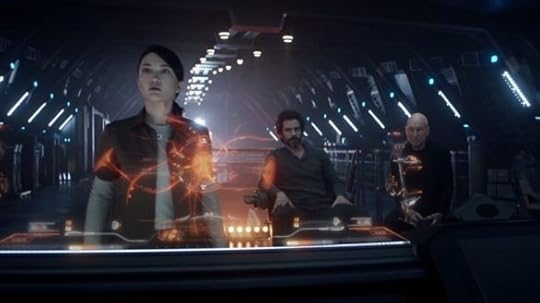 That brings me to what was probably the final nail in the coffin for me. Lately there’s been a lot of praise for the episode “Ad Astra Per Aspera,” in which Number One is put on trial for lying about her genetically engineered nature to enter Starfleet. This is being hailed as a classic example of Trek’s morality plays, with Una serving as a stand-in for real world minorities, but I don’t think that works for a variety of reasons.
That brings me to what was probably the final nail in the coffin for me. Lately there’s been a lot of praise for the episode “Ad Astra Per Aspera,” in which Number One is put on trial for lying about her genetically engineered nature to enter Starfleet. This is being hailed as a classic example of Trek’s morality plays, with Una serving as a stand-in for real world minorities, but I don’t think that works for a variety of reasons.
I don’t want to turn this into a debate about real world politics, but I do want to state for context that I strongly oppose genetic modification in the real world for ethical reasons. I acknowledge that it is a very nuanced issue with some compelling arguments to be made in its favour, and I don’t buy into the misinformation and pseudo-science that often surrounds it, but by and large I still feel it’s a Pandora’s Box we shouldn’t open. I always felt like Star Trek’s opposition to the issue was very smart and forward-thinking.
But even if you don’t think genetic engineering is inherently a bad idea, there’s still a very good reason not to let the augmented serve in Starfleet: Application to Starfleet is a very competitive process, and if you let the genetically engineered serve, you’ll quickly reach a point where those without augmentations can’t compete. It creates an arms race situation where people will have to keep going to more and more extremes to be considered viable candidates.
It’s the same logic behind not allowing performance enhancing drugs in the Olympics. It’s not about some moral objection to enhancements, or even really about fairness. It’s about protecting athletes. When there’s no limits on what can be used to gain an advantage, people will destroy their bodies using ever more extreme performance enhancers.
(This is also, incidentally, one of the main reasons why genetic engineering has the potential to be terribly destructive in the real world.)
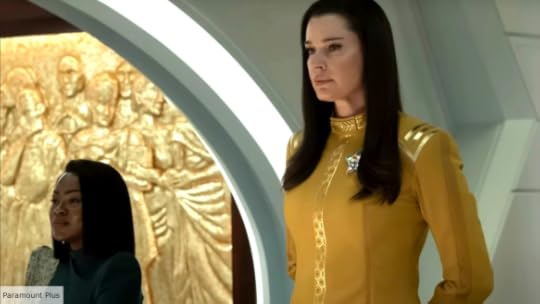 So, using Una’s genetic modifications has a stand-in for real world persecution of minorities just doesn’t really work. There’s no harm in accepting visible and sexual minorities. There are real, tangible downsides to letting genetically enhanced people openly serve in a competitive field.
So, using Una’s genetic modifications has a stand-in for real world persecution of minorities just doesn’t really work. There’s no harm in accepting visible and sexual minorities. There are real, tangible downsides to letting genetically enhanced people openly serve in a competitive field.
I’ve heard a lot of people compare this story to the plight of transgender people in particular, but if that was their intention, there was a much more effective way to do that: Just make Una actually trans. Say she used Illyrian genetic technology to transition. Then the story has an actual leg to stand on; she broke the letter of the law, but not the spirit.
There’s other, more banal issues with this story, too. For Una to have gone undetected for so long, we’re expected to believe that she has made it all the way to first officer of the flagship without ever getting a single medical scan — and remember, the transporter needs to read your DNA in order to reassemble you properly.
Also — and I grant maybe this makes more sense if you watch the actual episode, whereas I’m just going from reading spoilers — my understanding is that the ultimate solution is for Una to apply for asylum in the Federation to escape the persecution she’s experienced… in the Federation. Which makes no sense on any level.
All that is a very long-winded way of saying that this episode is another example of the kind of sloppy writing that has defined modern Trek. And it just proves to me that things really, truly aren’t going to get better any time soon. I’ve spent years waiting for the new shows to hit their stride — they all do just enough right to make you feel like they’re on the cusp of brilliance — but it just never comes to pass.
 So I think it’s time to just stop trying. Maybe I’ll change my mind in future, but for now I’m tired of being strung along. Once again I find myself feeling alienated in Trek fandom, and I am reminded of the fact that there has always been more Star Trek I don’t enjoy than Star Trek I do enjoy, and the parts of the franchise I consider to be high watermarks are mostly despised by the larger fandom.
So I think it’s time to just stop trying. Maybe I’ll change my mind in future, but for now I’m tired of being strung along. Once again I find myself feeling alienated in Trek fandom, and I am reminded of the fact that there has always been more Star Trek I don’t enjoy than Star Trek I do enjoy, and the parts of the franchise I consider to be high watermarks are mostly despised by the larger fandom.
When I was first writing this post, I was going to conclude by saying that Prodigy was the exception to this. It has its rough edges, but so far it’s achieved a level of quality the other recent shows never have.
And more importantly, it feels like Star Trek. It’s hard to define what’s so different, but it just has that intangible Star Trek feel that the others lack. There’s an earnest, genuine optimism to it that stands in stark contrast to the thinly veiled cynicism of Strange New Worlds and its ilk.
But then the news came down that Prodigy had been cancelled. With most of the second season apparently already done, it feels like there’s a better than average chance of it returning, but until it does, I guess I really am well and truly done with modern Star Trek.

